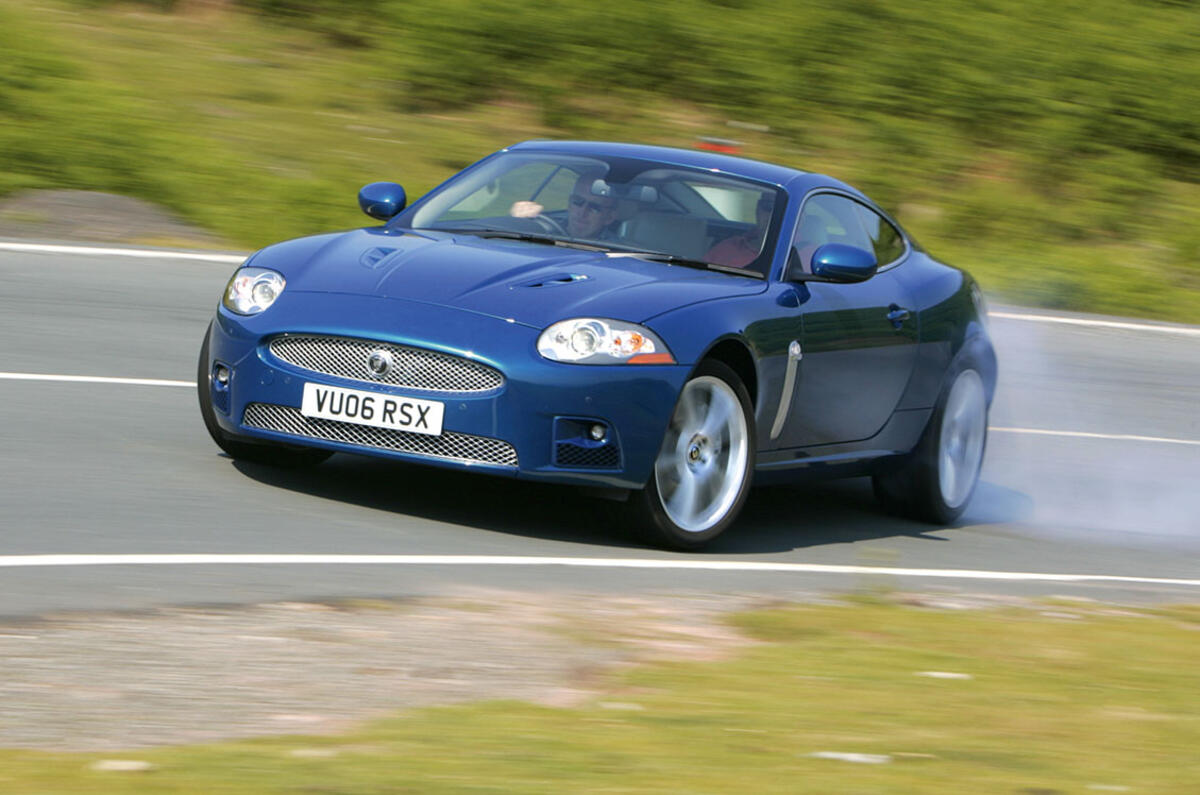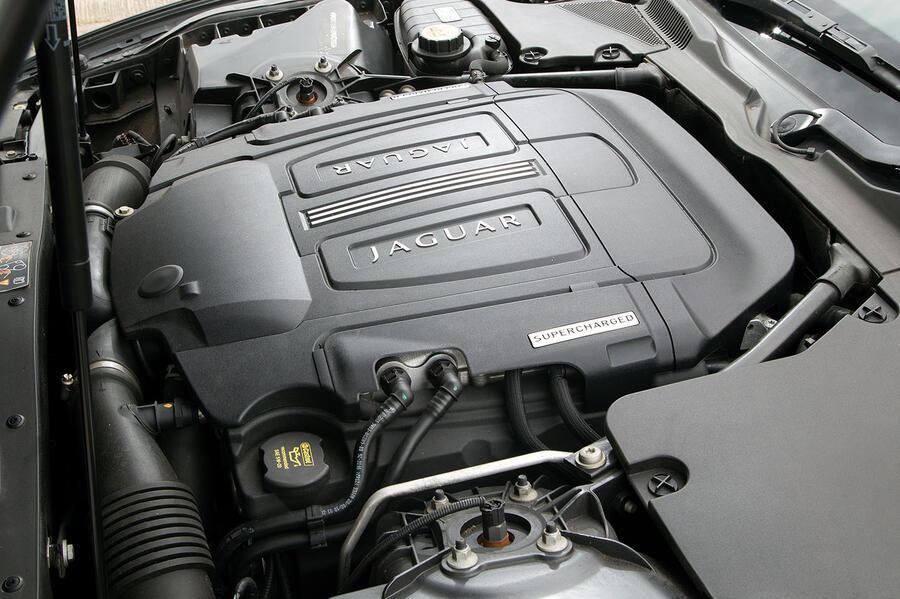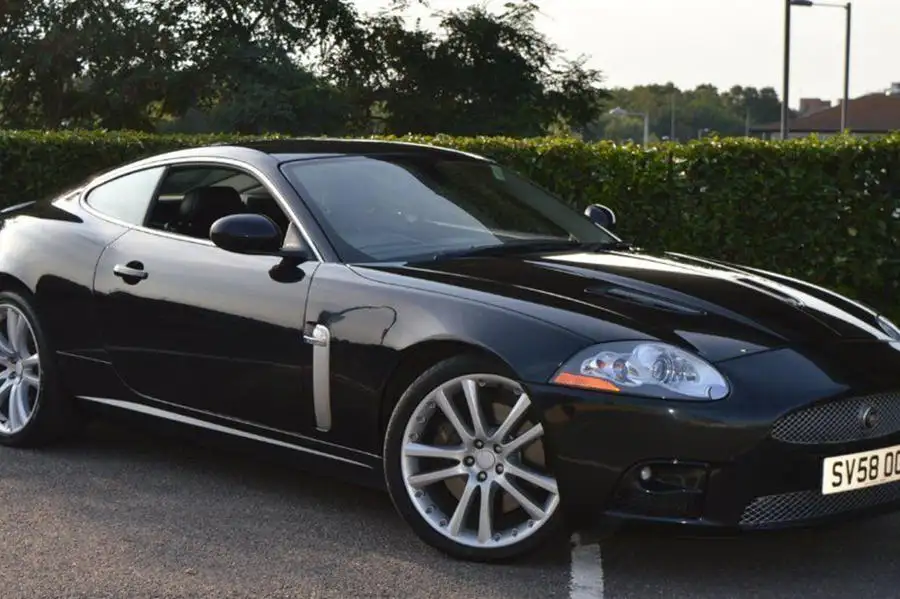
Not to be confused with its predecessor, the XK8 of 1996-2006, the XK was launched in 2007 and expired in 2014. The two were different, but from launch to its 2009 facelift, the XK used the same 300bhp 4.2-litre V8 that had seen service in later XK8s. From 2009, the XK gained an all-new 380bhp 5.0-litre V8 with direct injection.
The R version’s supercharger raises the 4.2’s power to 420bhp and the 5.0’s to 503bhp. There’s a 4.2 XKR-S (launched in 2008 and limited to 200 copies) but it has no more power. Instead, its chassis has been tweaked to make better use of it. And, yes, there’s a 5.0 XKR-S with 542bhp (as much as the XJ220).

As well as the two engines and their derivatives, there are two body styles: coupé and convertible. Prices start at around £8500 for a 2006-reg 4.2 convertible with 98,000 miles. Feeling brave? You could have a 2009-reg 5.0 convertible with 215,000 miles for the same price. It’s a reminder that, if looked after, an XK can rack up the miles without complaint.
The model was designed by Ian Callum, who was in part inspired by the E-Type. (Check out the grille and the way the cabin tapers over the rear haunches.) Its aluminium monocoque is far stiffer than the XK8’s, which helps handling and ride comfort. The 2+2 cabin is roomier and more modern than the XK8’s clubhouse affair (there’s no wood for a start) but don’t expect to fit more than the regulation golf clubs in the boot.
The 2009 facelift brought the new 5.0 engine – it’s smoother and more eager to rev than the 4.2 and the exhaust pops and bangs invitingly – and other things such as a new diff and Bilstein variable dampers in place of Jaguar’s Computer Active Technology System (CATS), with its Comfort and Sport settings. The Bilstein set-up feels even sportier.

Exterior changes were limited to new lights and mirrors, and narrow front-mounted brake cooling ducts. Inside, the centre console was improved and gained the rotary transmission selector first seen on the XF saloon.
A series of special editions followed, including the 523bhp XKR 75 (it was rumoured to have closer to 540bhp) in 2010 and the XKR-S GT in 2012, which had the S’s 542bhp as well as a race-spec cabin, a strengthened body and heavily reworked suspension.
Finished in black or pale blue, a tidy XK still looks the business, and that’s despite the existence of its near-replacement, the equally alluring F-Type. With just £10,500 being enough to bag a 2008-reg 4.2 with full Jaguar history, performance has rarely seemed such good value.
How to get one in your garage
An expert’s view: Chris Weston, service manager, Swallows
“The XK is a fantastic car and a big improvement on the XK8. For one thing, it’s roomy. I’m 6ft 5in and even I can fit into it comfortably. The suspension is also much more sophisticated and that’s what turns it into a real driver’s car. On top of that, the 4.2 in particular is extremely reliable. The XK can take very high mileages. We have customers whose cars have done from 180,000 to 200,000 miles and they still use them every day. The cars just lap it up. Fortunately, low mileage doesn’t seem to be an issue for the model, either, so long as it’s been serviced on the dot. Regular oil changes are critical.”

Buyer beware…
Engine: The coolant pipes below the R’s supercharger can crack, leaking fluid over the gearbox. It’s an expensive fix. A mild noise from the supercharger is likely to be the nose cone bearing. High-milers can rumble like they’ve a bag of rocks in them. A reconditioned charger is the only cure. The 5.0-litre can suffer injector problems that destroy the engine. Poor servicing is at the root of it.
Transmission: The ZF ’box is sealed for life but a careful owner will have had it serviced at 80,000 miles using genuine ZF oil. On the propshaft, check for oil weeps from the input shaft seal to the diff.
Suspension, brakes and wheels: Replace worn bushes with stiffer Powerflex items. Check the adaptive suspension works. Make sure the electronic parking brake functions. Deep potholes can warp the 20in alloy wheels. Tyres are expensive so check their depth.
Body: Bubbling under the paint across the body, around the boot, the bottom of the doors and on the front wings is aluminium oxidisation. The area will need to be treated and resprayed. Check the operation of the bonnet, which has a pedestrian safety function
Interior: Check for damp footwells because the overflow drain from the air-con, located in the dashboard, gets clogged and leaks. The dashboard has to be removed to fix it. Redesigned drain in cars from 2009 on gives no trouble.
Also worth knowing
Although generally reliable, the XKR’s Eaton supercharger may start giving trouble from 50,000 miles. A shudder or clonk when turning off the engine is one indicator. To check, detach the drive belt and feel for sloppiness and clonking in the upper pulley. Specialists such as paramount-performance.com and powerhouse.uk can help.
How much to spend
£6000-£9999: Good choice of 2006-07 4.2 coupés, most with 100k miles.
£10,000-£12,499: More same-age 4.2s, including convertibles, with mileages closer to 80k, and the first XKRs.
£12,500-£14,999: Mostly 2008-10 coupés, including some higher-mileage XKRs.
£15,000-£19,999: Low to mid-mileage 2011 5.0 coupés and convertibles. The first XKR 5.0s from £16,500 or so and tidier 4.2 XKRs.
£20,000 and above: Mainly the best 2012-14 5.0 and 5.0 XKRs, with last cars around £37,000.

One we found
Jaguar XKR 4.2, 2008/58, 65,000 miles, £14,490: This one-owner XKR has full Jaguar service history. It’s finished in black and has a full black leather interior. It’s got the pothole-sensitive 20in alloy wheels so we’d check if they’re warped. We’d have the gearbox serviced, too.
[“source=autocar”]








